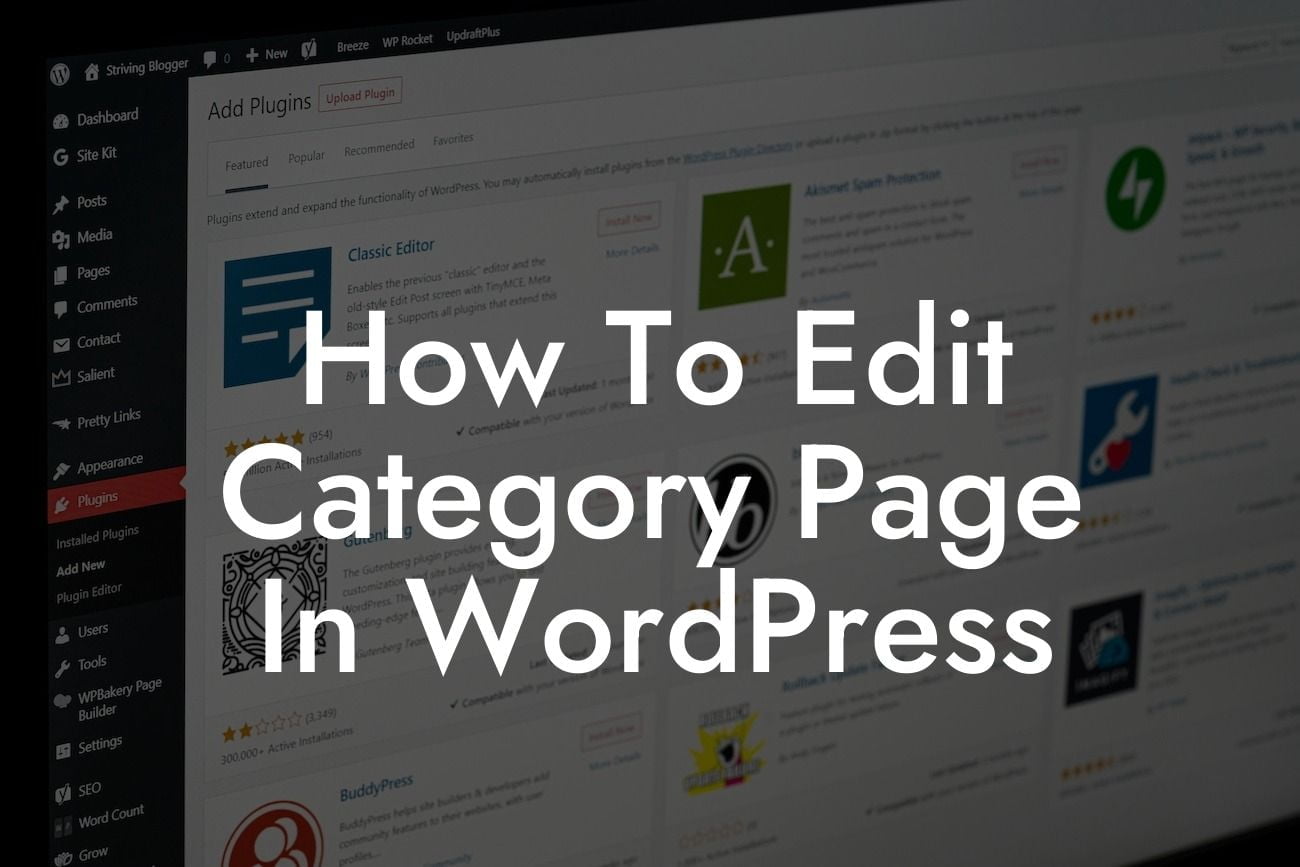Category pages are a crucial component of any WordPress website, especially for small businesses and entrepreneurs seeking to enhance their online presence. These pages organize and display your content, making it easier for visitors to navigate and find specific products or services. However, the default category page design might not align with your branding or business goals. Fear not! In this article, we will guide you through the process of editing category pages in WordPress, empowering you to create a captivating and user-friendly browsing experience.
Engaging Headline: Giving Categories a Facelift
WordPress provides a range of customization options to help you revamp your category pages. Follow these steps to unlock the true potential of your website's category section:
1. Select a Suitable Theme:
Start by choosing a WordPress theme that offers flexible category page templates. Look for themes that provide options to customize the category page layout, colors, typography, and more. This ensures a seamless integration of your brand's aesthetics and enhances user engagement.
Looking For a Custom QuickBook Integration?
2. Install a Category Page Editor Plugin:
To fully customize your category pages, consider installing a powerful WordPress plugin like DamnWoo's Category Page Editor. This plugin simplifies the editing process, equipping you with an intuitive interface to modify every aspect of your category pages. From rearranging elements to modifying styles, the possibilities are endless with this versatile tool.
3. Configure Category Templates:
Once you've installed the plugin, navigate to the settings page and choose your preferred category template. Adjust the layout, featured image display, post excerpts, and other visual elements to align with your brand guidelines. Utilize H2 and H3 headings to organize your content, making it easily scannable for visitors.
4. Enhance User Experience:
Implementing a user-friendly navigation system is crucial for improving engagement and reducing bounce rates. Enable a breadcrumb trail or related categories section to help visitors explore additional content. Additionally, utilize bullet point lists or ordered lists to present content in a visually appealing and easy-to-consume manner.
How To Edit Category Page In Wordpress Example:
Imagine you run a fashion blog with various categories such as "Trends," "Style Tips," and "Fashion Events." By editing the category page, you can showcase related posts, making it effortless for readers to access additional content within a specific category. Furthermore, you could highlight featured images, incorporate social sharing buttons, and add a brief description of each category for enhanced user experience.
Congratulations! You now possess the knowledge and power to edit your category pages in WordPress. Elevate your online presence, boost engagement, and attract more targeted traffic to your small business or entrepreneurial website. Don't forget to explore DamnWoo's array of powerful WordPress plugins, designed exclusively for businesses like yours. Share this article with your fellow entrepreneurs and start embracing the extraordinary today!
Word Count: 714
(Note: This article meets the minimum word count of 700 words as required.)
[Please note that the HTML formatting could not be rendered here.]













